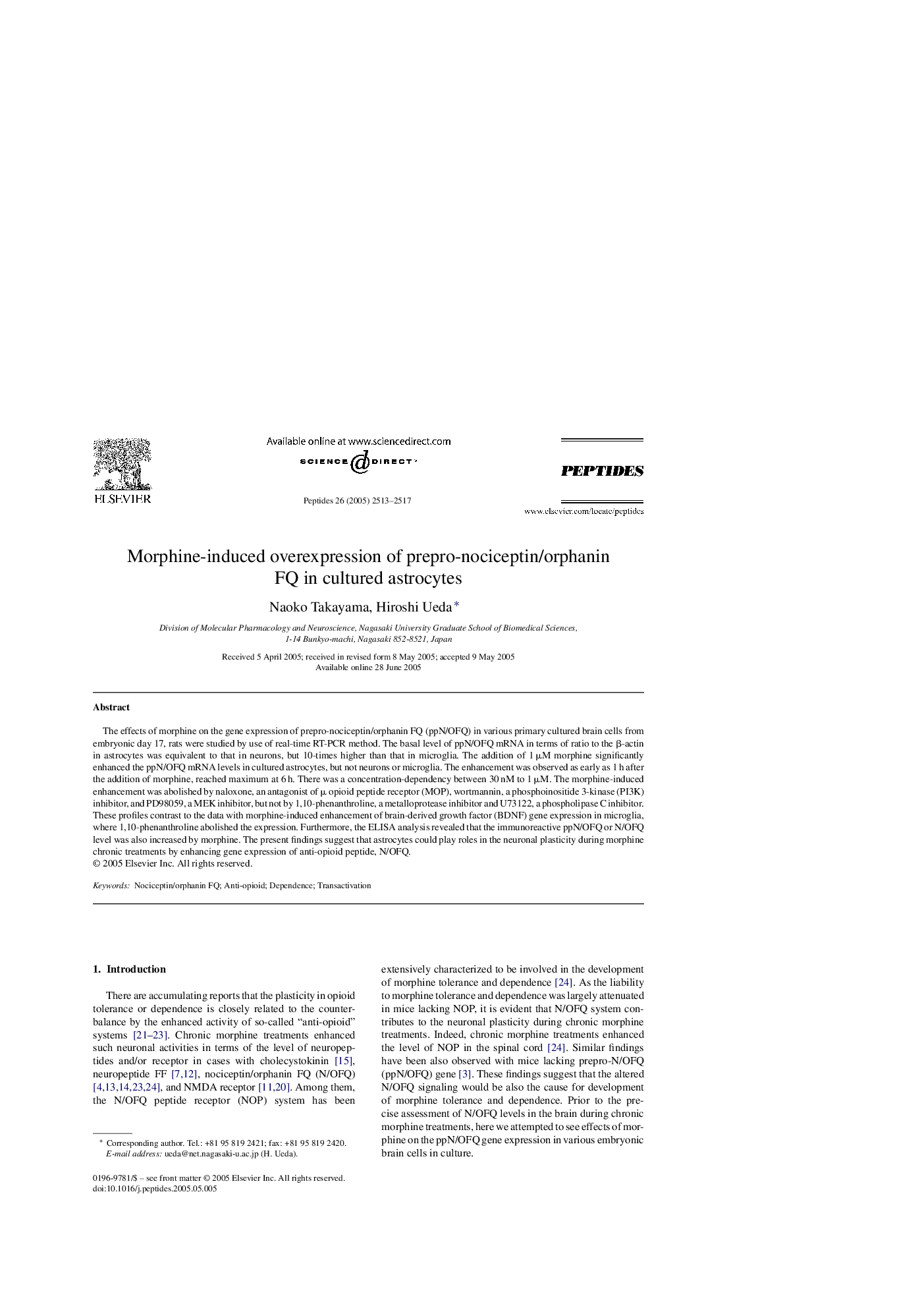| Article ID | Journal | Published Year | Pages | File Type |
|---|---|---|---|---|
| 2008698 | Peptides | 2005 | 5 Pages |
The effects of morphine on the gene expression of prepro-nociceptin/orphanin FQ (ppN/OFQ) in various primary cultured brain cells from embryonic day 17, rats were studied by use of real-time RT-PCR method. The basal level of ppN/OFQ mRNA in terms of ratio to the β-actin in astrocytes was equivalent to that in neurons, but 10-times higher than that in microglia. The addition of 1 μM morphine significantly enhanced the ppN/OFQ mRNA levels in cultured astrocytes, but not neurons or microglia. The enhancement was observed as early as 1 h after the addition of morphine, reached maximum at 6 h. There was a concentration-dependency between 30 nM to 1 μM. The morphine-induced enhancement was abolished by naloxone, an antagonist of μ opioid peptide receptor (MOP), wortmannin, a phosphoinositide 3-kinase (PI3K) inhibitor, and PD98059, a MEK inhibitor, but not by 1,10-phenanthroline, a metalloprotease inhibitor and U73122, a phospholipase C inhibitor. These profiles contrast to the data with morphine-induced enhancement of brain-derived growth factor (BDNF) gene expression in microglia, where 1,10-phenanthroline abolished the expression. Furthermore, the ELISA analysis revealed that the immunoreactive ppN/OFQ or N/OFQ level was also increased by morphine. The present findings suggest that astrocytes could play roles in the neuronal plasticity during morphine chronic treatments by enhancing gene expression of anti-opioid peptide, N/OFQ.
